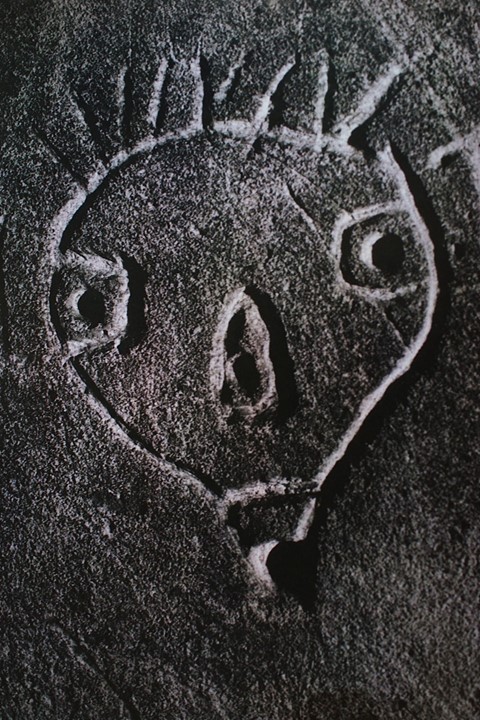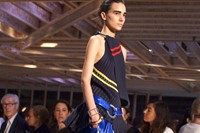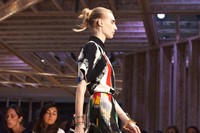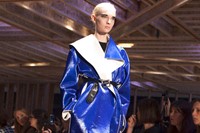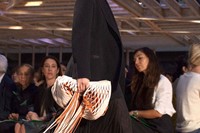Phoebe Philo resets the fashion button with a collection designed for women with "lots and lots of feelings" and a passion for art
She’s intellectual, arty and feminist: the Céline woman is all brains. But now she’s also heart. This season Phoebe Philo decided it was “the right time to move on” (and reset the fashion button), and she admitted to being inspired by “lots and lots of feelings”. For S/S14, Philo turned her clothes into canvas filled with passionate brush strokes. Here, AnOther presents Philo's top five art references.
Brassaï: Waiting for the guests on each of the brightly-coloured seats at the Tennis Club de Paris was a mood book. Its pages contained pictures of graffiti shot by Hungarian photographer Gyula Halasz, who came to be known as Brassaï in Paris, where he lived from 1924. The book’s message was clear: the Céline woman does graffiti, but only through the prism of avant-garde art.
"The book’s message was clear: the Céline woman does graffiti, but only through the prism of avant-garde art"
Sonia Delaunay: The Russian-born French painter – who also tried her hand at fashion design – was the inspiration behind the semi-circular brush strokes printed over silk tops. The collection’s colour palette of bright red, green and yellow tones mixed with powder pinks, sand and mint hues were also reminiscent of Delaunay’s abstract work.
Yves Klein: The leader of the Nouveau Réalisme movement became known in the late fifties for his minimal paintings in a distinctive colour dubbed International Klein Blue. Among the collection pieces, skirts, dresses, bags, and a particularly striking patent leather coat boasted that recognisable shade of blue.
Street Art: The kind created by Jean-Michel Basquiat in the Lower East Side and by Keith Haring on the subway in the late seventies and early eighties, to be exact. Through Philo’s filter, both artists were present in the collection (Basquiat in the last few looks combining black, yellow and white and sporting leather fringes, Haring in the naïve, slightly tribal characters of a black-and-white coat).
German Expressionism: And, particularly, Otto Dix’s female characters. Mundane, strong, anti-conventional and emotional, they reflect the values and personality of the new Céline woman. After all, it doesn’t get much more Céline than the portrait of Sylvia Von Harden.
Text by Marta Represa
